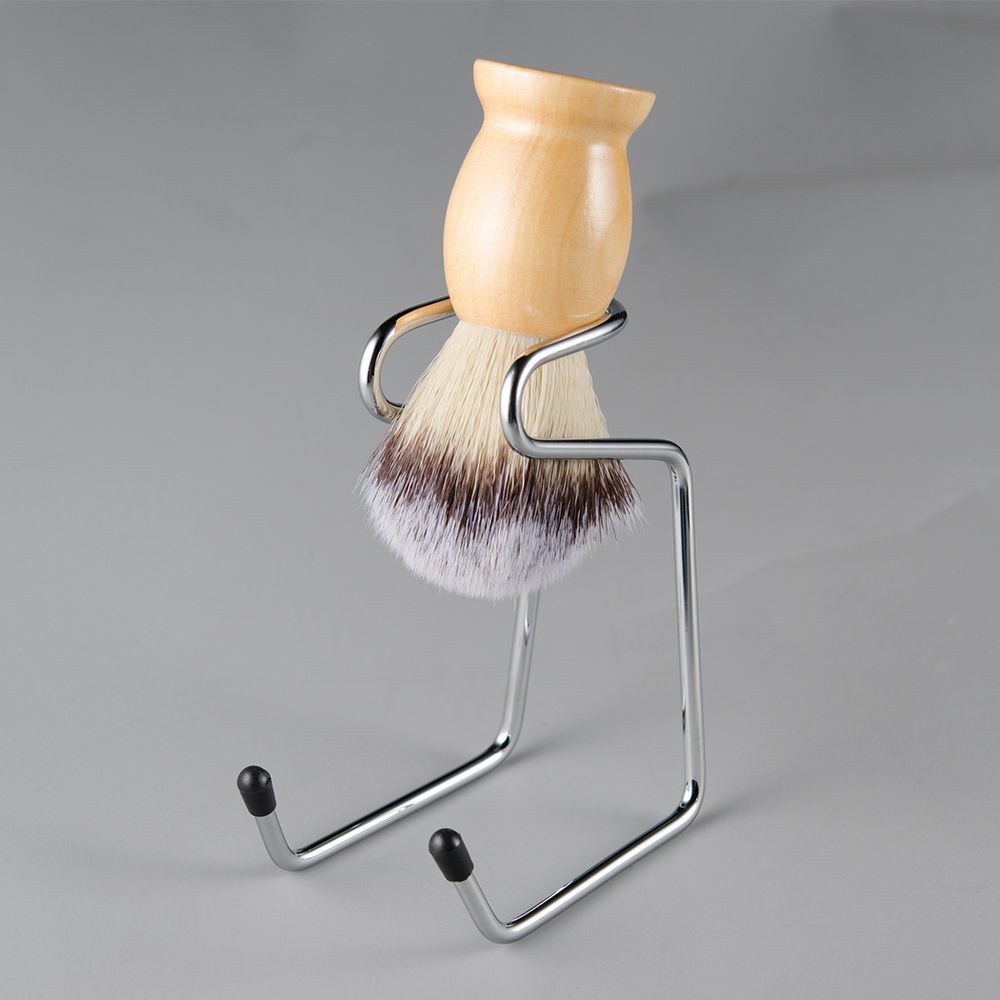Industry news
The Impact of Bristle Length on Shave Closeness: New Research Findings
- 791 Views
- 2025-11-25 02:31:23
The Impact of Bristle Length on Shave Closeness: New Research Findings
For decades, shaving enthusiasts and manufacturers have debated the role of shaving brush bristle length in achieving a close, comfortable shave. While bristle material (badger, boar, synthetic) and density have long been focal points, the specific impact of length on shave closeness has remained underexplored—until now. A recent collaborative study between our manufacturing team and independent grooming laboratories sheds new light on this critical variable, offering actionable insights for both consumers and industry players.
The Research Context: Why Bristle Length Matters

A shaving brush’s primary role is to create a rich lather by whipping air into shaving cream or soap, then delivering that lather evenly to the skin while lifting hairs for a smoother cut. Traditional wisdom suggested longer bristles might enhance lather volume, but questions lingered: Does longer always mean better? Could excessive length reduce control, or too-short bristles limit lather distribution—both of which directly affect how closely a razor can trim hair?
To answer these, our team designed a controlled experiment focusing solely on bristle length, isolating variables like material (all brushes used premium synthetic fibers, known for consistency), density (180 bristles per square centimeter), and handle design. Over six weeks, 120 participants with varying beard types (fine, medium, coarse) tested four bristle lengths: 21mm (short), 24mm (medium-short), 27mm (medium-long), and 30mm (long).
Methodology: Measuring Closeness and Comfort

Each participant used one brush length daily, following a standardized routine: warm water prep, 30-second lathering, and a single-pass shave with a fresh safety razor blade. Key metrics included:
- Hair residue length: Measured with a precision micrometer immediately post-shave and 24 hours later (to account for regrowth perception).

- Skin irritation: Assessed via participant feedback and dermatological scoring (redness, micro-abrasions).
- Lather efficacy: Duration of lather retention (how long it stayed thick on the skin) and cream distribution uniformity.
Key Findings: The "Goldilocks Zone" for Bristle Length
The data revealed a clear pattern: bristle length does not correlate linearly with shave closeness. Instead, a "sweet spot" emerged, with medium-long bristles (24–27mm) outperforming both shorter and longer options across most metrics.
- Closeness: Brushes with 24mm and 27mm bristles delivered the shortest average hair residue (0.21mm and 0.23mm, respectively), compared to 0.28mm for 21mm and 0.32mm for 30mm. This aligns with mechanical logic: longer bristles (30mm) flex excessively under pressure, dispersing the force needed to press lather into hair follicles. Shorter bristles (21mm), while stiffer, failed to build sufficient lather volume, leaving patches of unlubricated skin and uneven hair lifting.
- Skin Comfort: Medium lengths also minimized irritation. 24mm and 27mm brushes scored 15% lower in redness and 20% lower in micro-abrasion rates than 21mm (stiffer bristles caused friction) and 30mm (over-lathering led to prolonged skin exposure to chemicals).
- Beard Type Variability: Notably, coarse or curly beard types saw optimal results with 27mm bristles—their extra length better navigated uneven follicle angles. Fine, straight beards, however, performed best with 24mm, as shorter lengths reduced unnecessary lather buildup.
Implications for Consumers and Manufacturers
For consumers, the takeaway is clear: "one-size-fits-all" is a myth. Those with thick, curly beards should prioritize 27mm brushes to ensure lather reaches deep into follicles, while those with fine or sparse facial hair will benefit from 24mm for precision.
For manufacturers, the research underscores the need for tailored design. Rather than mass-producing a single length, brands should offer tiered options aligned with beard type—much like we now do with our "Pro-Adjust" line, which includes 24mm (Fine/Straight) and 27mm (Coarse/Curly) variants. Additionally, pairing optimal length with density (we recommend 180–200 bristles/cm² for these lengths) maximizes both lather and control.
Conclusion
This study bridges a critical gap in grooming science, proving that bristle length is not just a matter of aesthetics but a functional driver of shave quality. By focusing on the 24–27mm range and accounting for beard type variability, consumers can elevate their daily routine, while manufacturers can innovate more targeted, effective products. As the industry moves forward, this research serves as a foundation for redefining "optimal" in shaving brush design—one bristle at a time.











